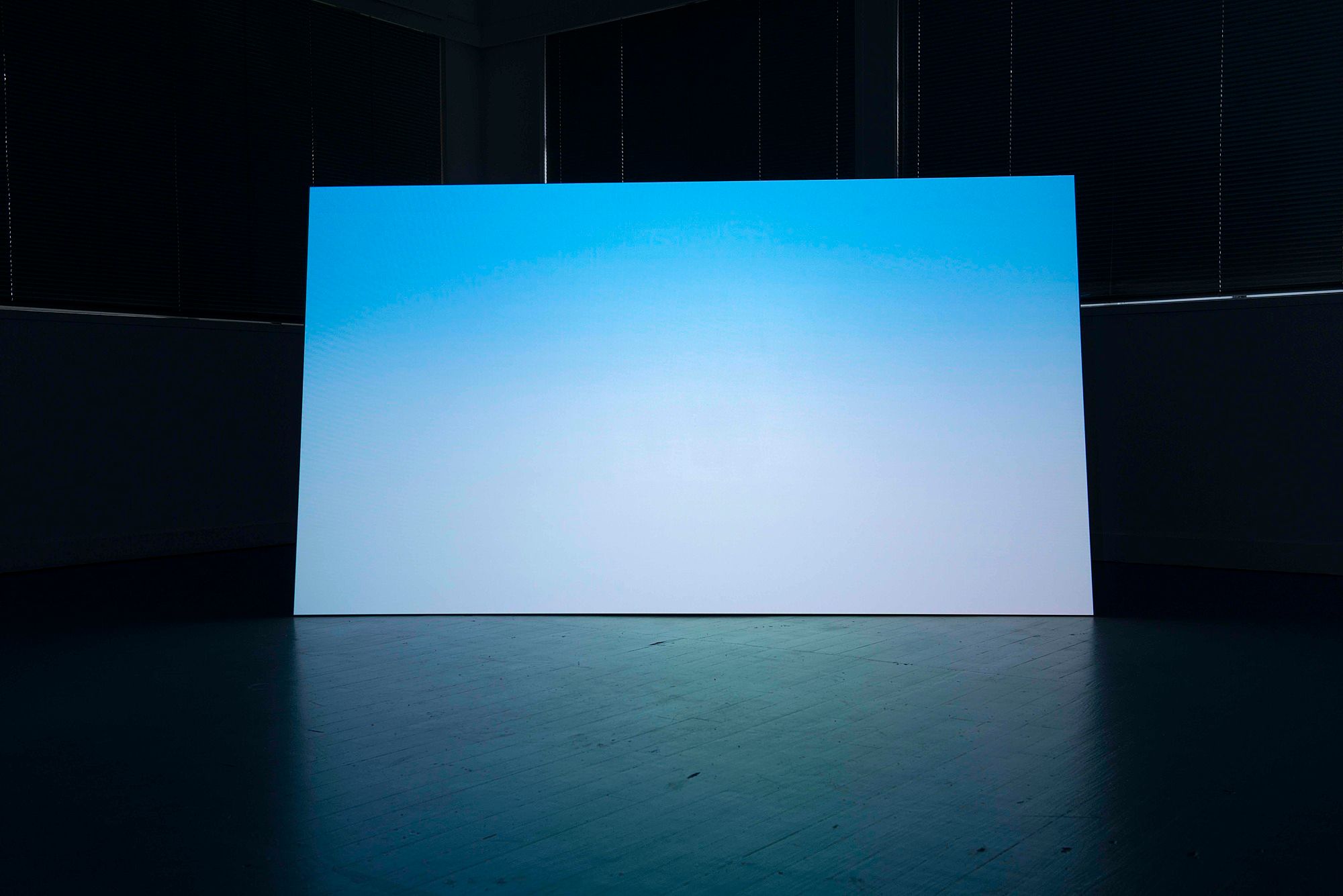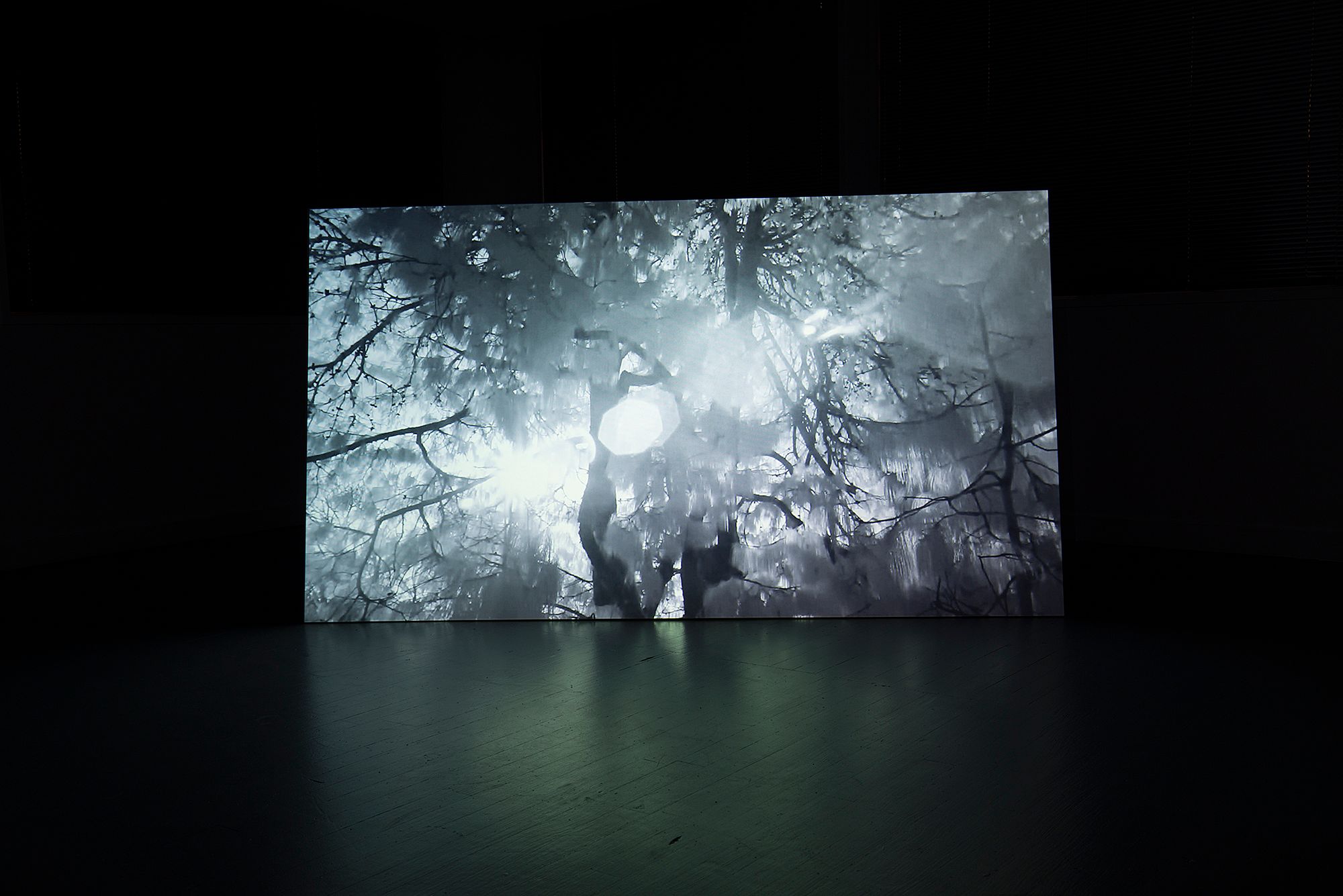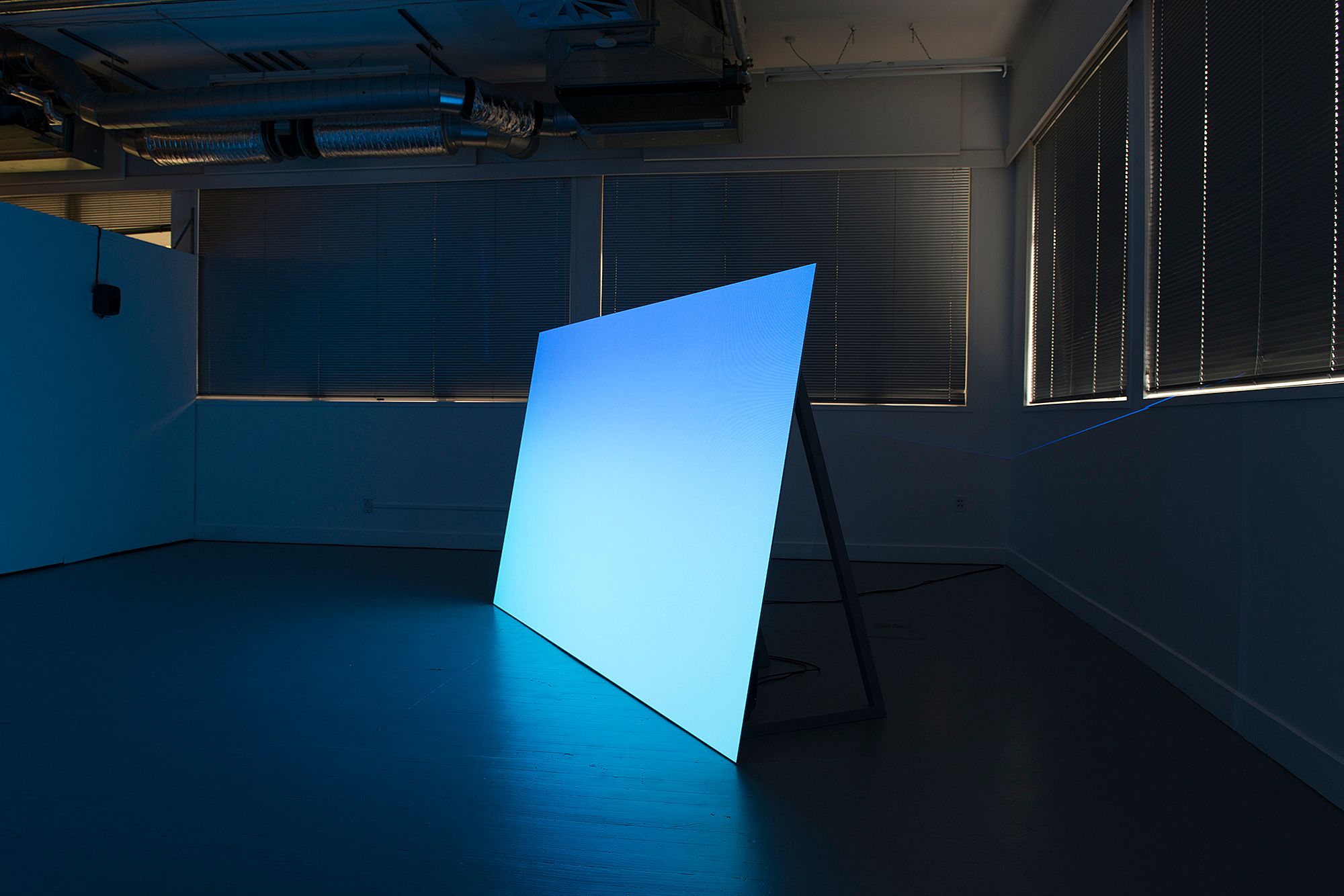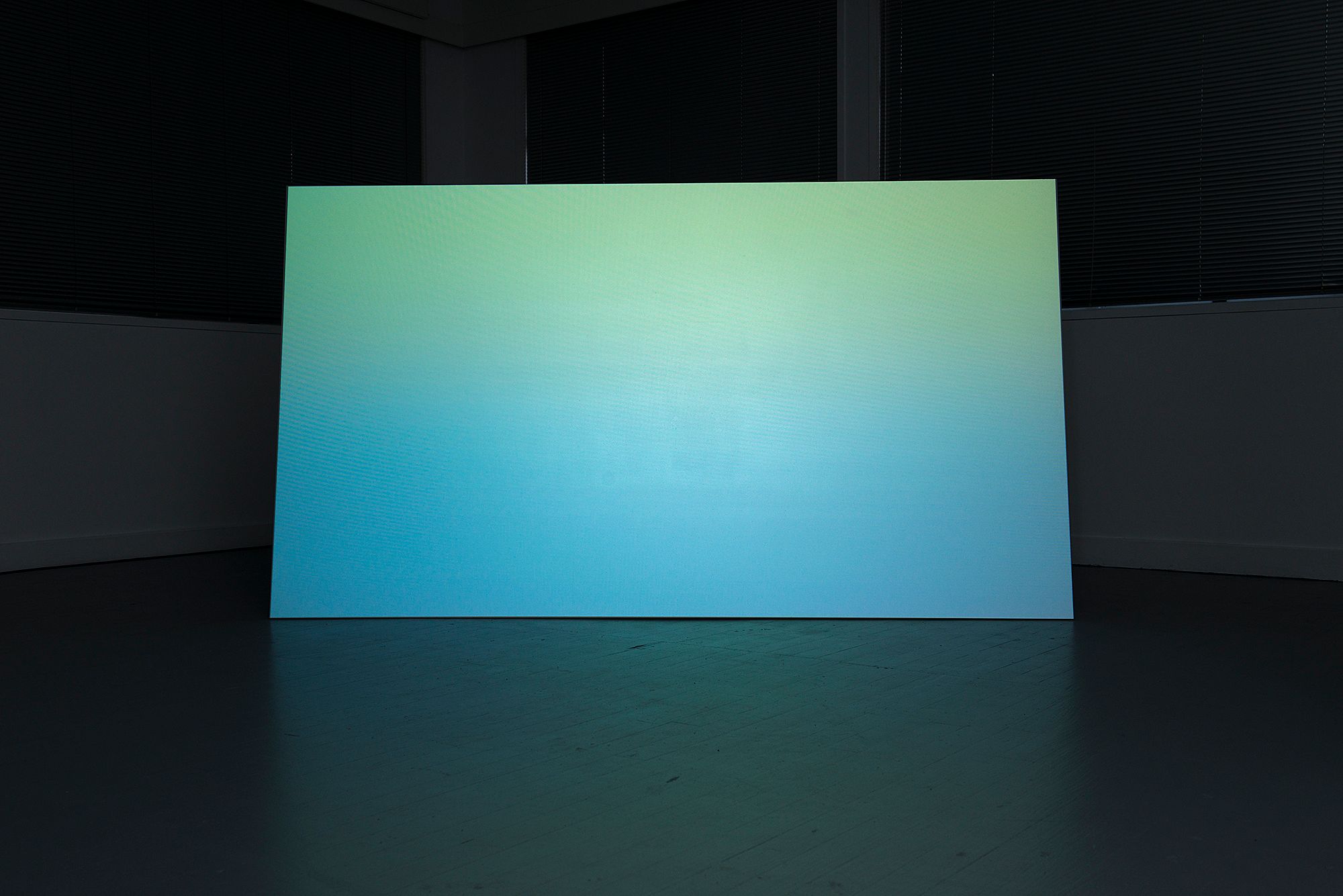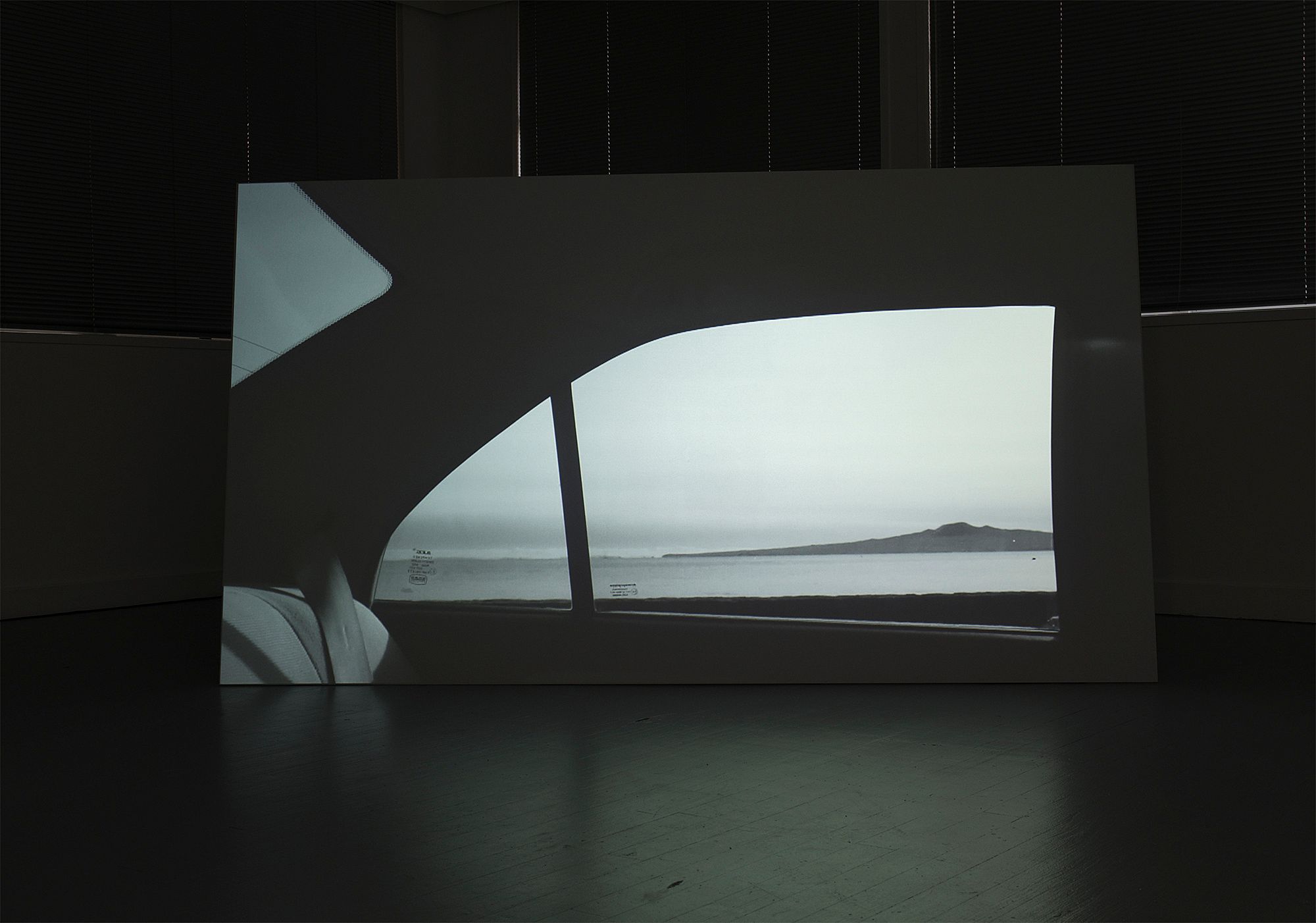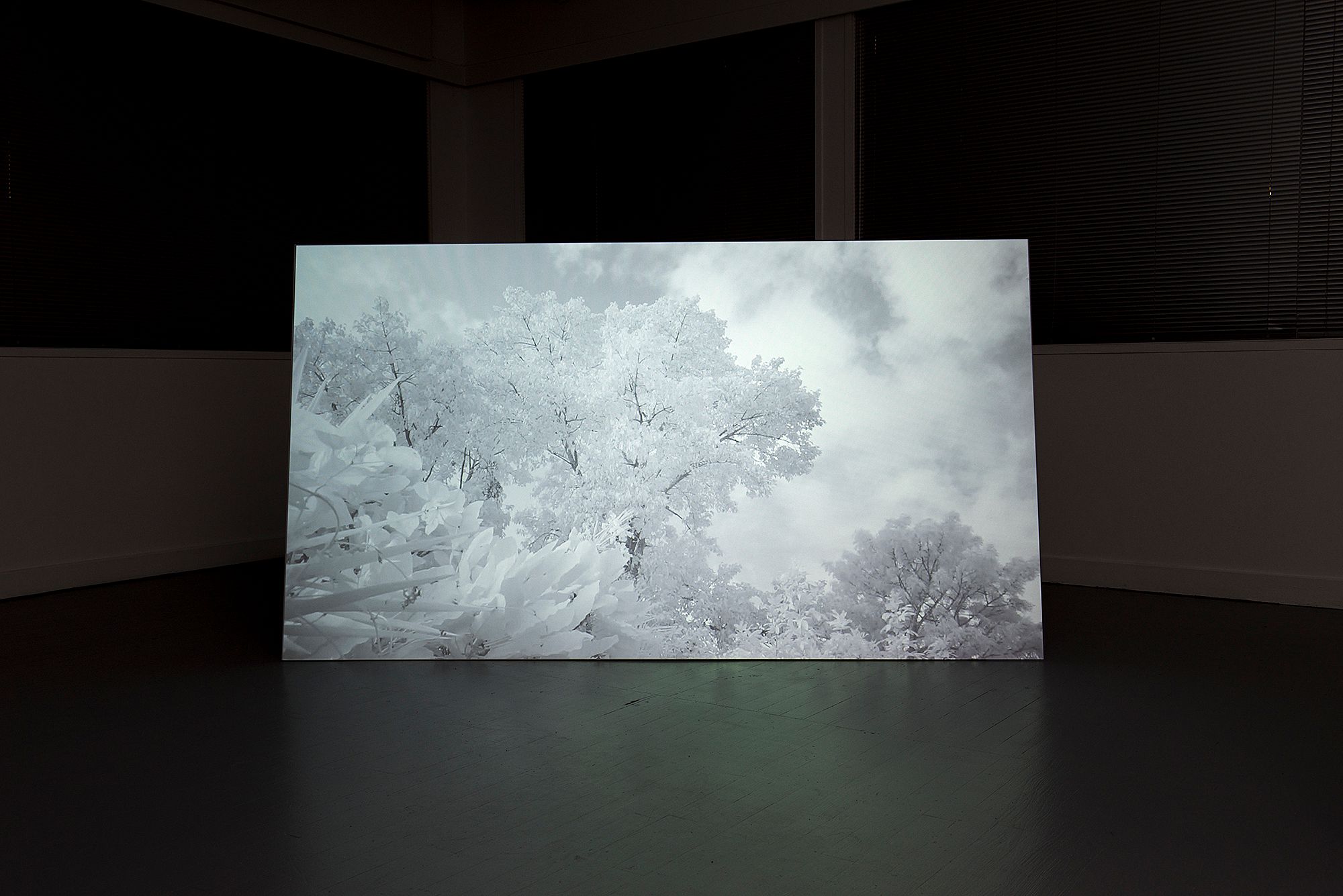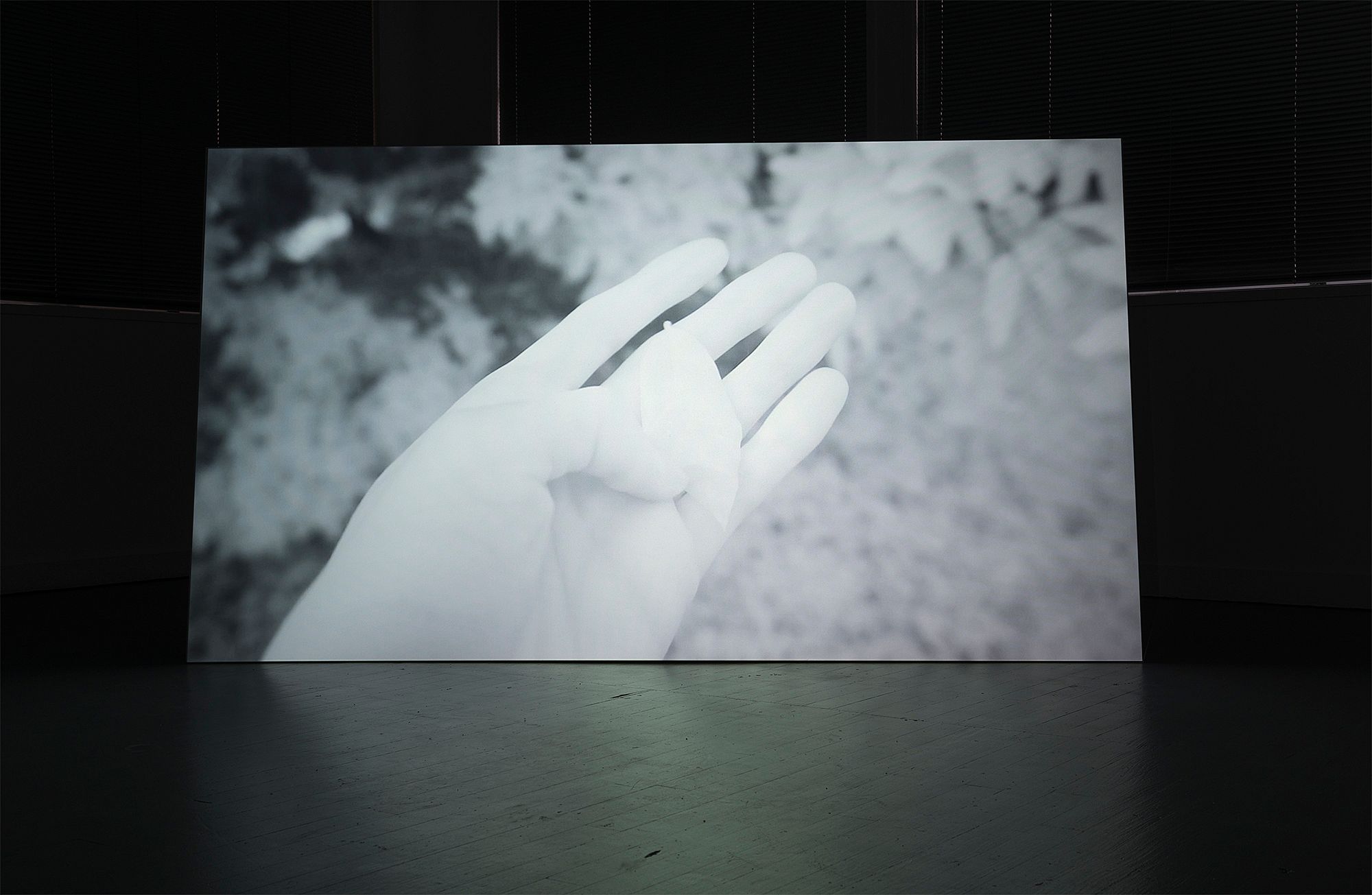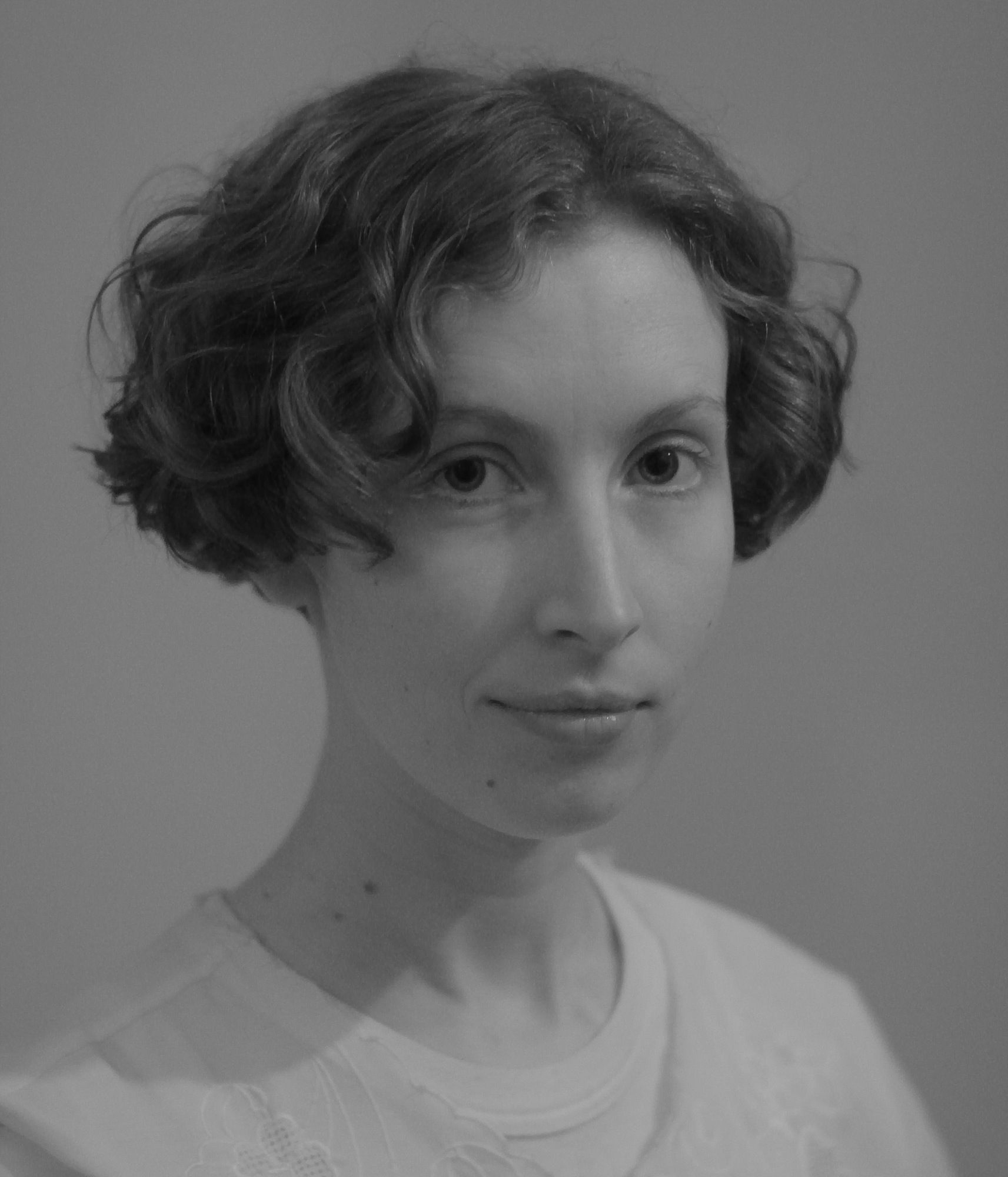Sparkling Winter Tonic: Elle Loui August's 'Mercury'
Victoria Wynne-Jones on a project that blends curatorial practice and film production to superb effect.
Victoria Wynne-Jones on a project that blends curatorial practice and film production to superb effect.
A sudden, brief exhalation. Another, and another – this time slightly longer and lower in pitch. With a ‘haaaaaa’ the vowel sound is extended. ‘Hveeeeee!’ Exhale, inhale, exhale. Out, in, out. Then a lengthy, distracted sigh. A generous release becomes a force that activates lips, making them vibrate with sound. A more rigorous blowing out. A quick intake of air. A rhythmic, polyphony of multiple breath-like sounds, so that it is difficult to tell whether there are several people breathing in concert or manipulated layers of sound placed one on top of another. There are variations in length, pitch, and quality. Air is barely or partially voiced.
These recorded sounds gently indicate that breathing is something elemental. What is highlighted is the opening and closing of bodies. There is a stoppage and release of air. Currents are absorbed and expelled, shaped by lips, teeth, tongue, other organs of articulation. Sometimes what is heard seems to be a breath through pursed lips. At other times, it sounds like the extinguishing of a candle, a long blow on cold fingers in the hope of warming them, an ever so gentle exhalation on the sting of a grazed knee. A sharp intake seems to indicate shock or surprise.
Each breath could be an increment of significance making up a kind of proto-language. Even mere vibration, a play of air and obstacle, carries much meaning. Guffaw, snort, snuffle, huff, sigh. Like the snippets of language utilised in Elizabethan verse to ensure iambic pentameter is maintained: the ‘o’s and ‘ay’s. The ‘ah’s and ‘er’s and ‘eh’s seeking agreement, expressing affirmation, exasperation, or astonishment. Rising and descending inflections.
One is reminded of the way lungs seem to function like fleshy bellows, or the way early balloons were fashioned from inflated animal bladders. Air shrieks as it rushes out of a balloon whose opening is held taut. The sounds are comic, strangely bent, high-pitched, and squealing, or they are flaccid, lower-pitched, and wobbly, according to how much space they are afforded as they exit the balloon’s rubbery neck. Eeeeee! It all loosens and escapes at the end.
Pensive. Yes. Pensive, internal, condescending, neutral, analytical, mannered, hesitant, understanding, generous, warm, hidden, considered.
One Saturday evening in winter, a small crowd braved the cold and ventured to the deserted city campus of the University of Auckland. It was an informal gathering, spread almost by word of mouth and composed of friends and supporters of the artists. Let in practically one by one via swipe-card, we were spared the harsh illumination of the fluorescents and prey to what natural light there was left.
In a darkened corner studio of the Elam B building, projected upon a screen supported at a slight angle and set diagonally across the floor was the video work Mercury, all a-shimmer in silver and grey. The large black trees, together with the icy air outside, the blue dusk light, and the attending voices in hushed tones created an ambience that gently fizzed. It felt like a winter tonic.
Her eyes, breath, hands, mouth, posture.
As if breath itself has the capacity to extinguish images, they cut in and out, to and fro, from black. A counterform is created with black as well as blankness and colour. Each is of a different length and each becomes a refuge, pause, or rest from representation. Then there is a gradient, from silvery grey to blue. The silver increases its area like the spreading of cloud cover.
The effect is similar to a window of frosted glass as it filters and diffuses external daylight. The blue deepens. Another gradient, from rich high-key blue to one that is paler. It yawns like a perfect sky, then darkens at the top, becoming black. Order is reversed. There is another gradient, this time blue at the top and grey at the bottom. The warm grey slowly takes over and fills like fog until a wan yellow light is introduced at the top of the frame. It increases its area, then dwindles.
Mercury is an almost seven-minute moving image piece including work from performer and filmmaker Elena Betros, filmmaker Juliet Carpenter, and sound artist, performer, and composer Nell Thomas. Conceived by Elle Loui August as part of her Master of Fine Arts degree, it is an exhibition that takes the form of a filmic work – one that teases out the congruencies, tensions, and differences between exhibition-making and curatorial practice.
The project enjoyed its own methodology according to which the ‘curatorial’ is conceived as a practice of co-writing or inter-writing, involving the variety of voices with which it engages. As a whole, it involves various aspects of the field of contemporary art, including video, performance, sound, and literature, as well as practices which utilise some or all of these media. It allows each instance of these practices to be self-determining, connecting to their own traditions and experimental histories in order to propose that exhibition-making does not need to be restricted to a formal space within a built environment, but instead can take place within moving images.
Often. Often? Yes. Often her body moves quickly and suddenly shifting into different moods. She is heaten. Heaten? Yes heaten. As her moods are shifting, she is shifting, yes.
Skies seen from below feature heavily in the work. There are upside down horizons, black trees and blue skies encircled by halos of golden light. There is the familiar isthmus perspective of Rangitoto seen against a clear backdrop from a moving car. The vertebrae of a vapour trail against powder blue. A view of above mediated by lace-like trees. Passive/active, the point of view of being driven, lying back and distractedly observing.
A state of being in transit, daydreaming from the backseat, the sky framed by car windows, as suns, streetlights, and pedestrian overbridges strobe and whip by. Trees are uniform, marching by the roadside. Panning across, skies are silver, brushed or dusted with cloud, marred by lens flare, sometimes brightly blown out.
Including contributions from a collection of artists within a single filmic space, Mercury involves a shared negotiation of time-space via an expanded conception of authorship. Inviting the work and working processes of several artists together within such a structure brought them into an affective conversation, guided by the development of each of the artist’s propositions, compositions, and scores. Such a unique, discursive, and improvisational framework – with its attending relationships and materials – extends the possibilities of curatorial practice.
A memorable component of the work is its use of infrared camera technology, which renders everything that is filmed pale, silvery, and delicately galvanised. It creates an almost pantheistic effect as every leaf, twig, and needle quivers. A park-like environment predominates; the setting seems to be a public garden. A quintessentially New Zealand ti kouka, or cabbage tree, appears, with its distinctive forking trunk and radiant leaves.
The viewpoint is always self-conscious, frequently problematized via framing, angles, and movements. Sometimes it is upside down, flipped, sometimes spinning or swinging with momentum. Slow, hesitant camera movements are made, crossing back and forth. A sense of filming whilst walking, surveying the land. A craning, looking upwards, almost aspirational, or like some sort of entreaty.
A way of looking, which involves unevenly scanning trees. They seem to be burdened with snow, or blossoms. Twisted branches speckled with elongated leaves, lush and silvered, icy, white. Animated by the breeze they move, teeming, waving like multitudinous stars, fingers, or hands. Trees stretch upwards; the sun peeps through vein-like branches. There is a convoluted play of branch, leaf, twig, and seedpod seen from below – long-limbed branches in relief against the sky. The canopy is rendered silver; hand-held footage captures a moving through terrain with a drop and a rise. A play between the deciduous, with their naked, spindly, complex forms, and still bushy branches, shaking their heads.
Her posture, mouth, hands, breath, eyes. Temperate, moving between warm and cool, but never gives any appearance of hot or cold. She meanders, yes.
Occasionally this urban, botanical, colonial space is inhabited by a figure. Her hand gently fingers a leaf. A head of apparently flaxen, wavy hair tilts, rests itself on the back of a hand coming from the crook of an arm. Standing upright, arms extend downwards, to one side, they move back and forth, with long fingers. Before upper thighs the hands slowly rotate and blow back and forth from side to side as if in a current. An arm is stretched out. Another hand, one that is elongated with fingers together follows the ribbed stretched fabric along the long-sleeved arm from wrist to shoulder.
Standing before the camera, vegetation behind her, she twists from the waist, her arms wrapped around her midsection, one hand on front, one on back. Again a body as felt by the back of the hand – touching and touched. One hand stretches, creeps right around from the back to the side. Seen from behind, she is bent over at the spine. Slowly uncurling, one hand follows the movement vertebra by vertebra with the tips of her fingers; they travel upwards, feeling through the fabric of her clothes. Upon trees, against a sky there is the top part of a young woman whose face is hidden behind loose hair. Her arms are outstretched, towards the sky. She barely turns.
Viewing Mercury was akin to feeling it wash over me like a succession of warm waves. Its collective authorship means that it enjoys an unusual and ineffable structure and operates with its own internal logic. Mesmerizing, polyrhythmic, the work seems to be driven by its own quietly relentless momentum. Energy is built up and released. It is ever open, resisting stasis or fixity, like quicksilver itself.
Images by Jennifer French.
Mercury, a curatorial project conceived by Elle Loui August,
with work by Elena Betros, Juliet Carpenter, and Nell Thomas,
Elam B Building, University of Auckland, Saturday 2 July 2016.

